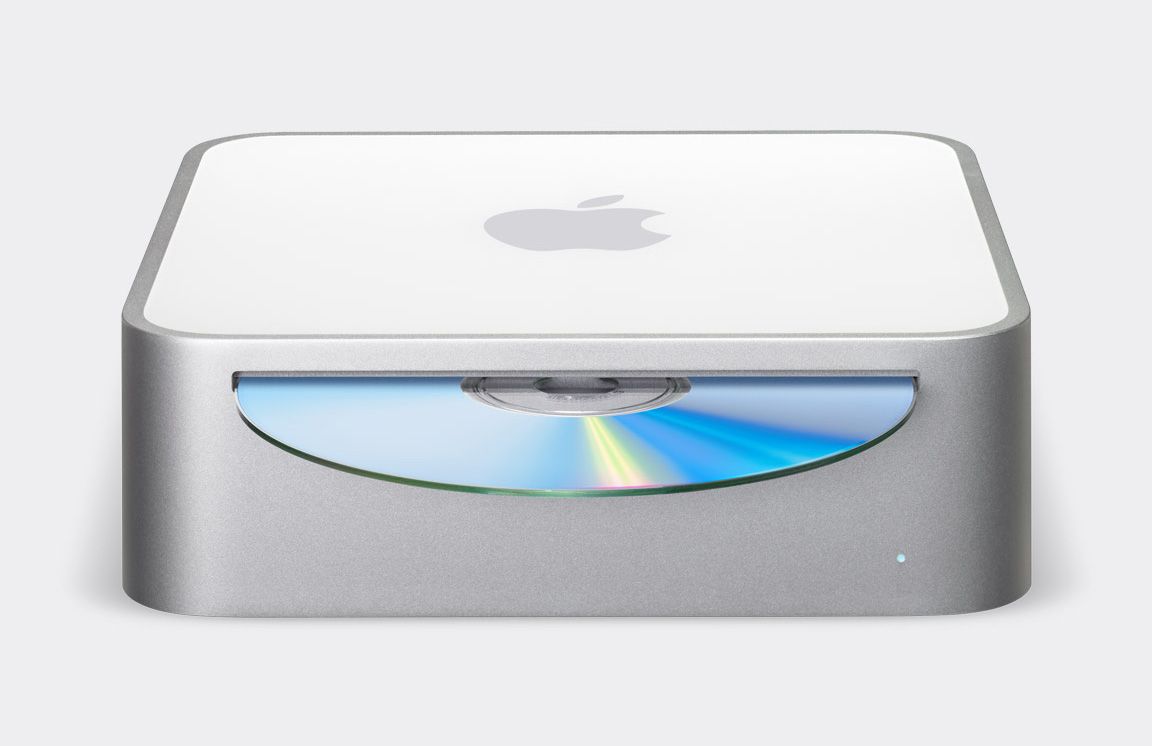Tech News
Why the Mac Minis Design Didnt Change for 15 Years
Apple is infamous for redesigning its phones, computers, and tablets on a regular basis, sometimes to a detriment. However, there’s one Apple product that has stuck around for over a decade without a substantial makeover: the humble Mac Mini.
The Forever Mini
Apple introduced the first Mac mini in 2005 as a compact budget desktop computer, without the integrated screen found in the iMac series. It packed a 1.25GHz or 1.42GHz PowerPC G4 processor, a 40GB hard drive, an (AMD) ATI Radeon 9200 GPU, FireWire and USB connectivity, and a DVD drive into a sleek package. It measured just 2.0 x 6.5 x 6.5 inches, or 5 x 16.5 x 16.5 cm. It received positive reviews, and updated versions using Intel processors arrived in 2006, without a substantial design change.
Apple revamped the Mac Mini in 2010 with a new unibody aluminum chassis, more closely matching the other Mac computers of the era and early iPads. It was even thinner, measuring just 1.4 x 7.7 x 7.7 inches (3.5 x 19.5 x 19.5 cm), and the integrated power supply meant there was no more power brick on the wall cord. Apple said the switch to newer Intel Core 2 Duo processors reduced power usage “by an incredible 25 percent to less than 10W at idle, less than half the power required by competing systems.”
The unibody Mac Mini was the first, and so far, only significant change to the computer’s design. Apple has released many more models over the years, upgrading the internal components (including a switch to Apple Silicon chips in 2020) and connectivity options, but the design has remained the same. It’s still a thin square-shaped Mac, roughly 1.4 inches tall and 7.7 inches across, with all the ports on the back and a small power light on the front.
Apple did make a few minor changes over the years, though. The integrated DVD drive vanished with the introduction of the mid-2011 Mac Mini, and a “space gray” color option was introduced in 2018 for certain hardware configurations.
So, why has the Mac Mini gone over a decade with the same hardware design? There are a few reasons.
The Intel Problem
Apple’s hardware design throughout the 2000s and 2010s was all about making devices thinner and lighter, sometimes to the detriment of the final product. The super-thin iPhone 6 was prone to bending in people’s pockets, and the 2015 MacBook sacrificed almost all its ports to achieve a slimmer design. The Mac Mini wasn’t subject to the same level of design scrutiny as some of Apple’s other products. Maybe that was because most people don’t move around desktops as often as laptops or phones, or the Mac Mini just wasn’t as important to Apple.
There was another problem with potential redesigns: Intel. The Mac Mini desktops used laptop-class Intel chips, as they generated less heat than regular desktop CPUs while still providing decent performance. Most Intel iMacs used laptop-class CPUs for the same reason. If Apple had ever decided to make the Intel Mac Mini smaller, it probably would have needed an even less-powerful processor (like the Core M used in the 2015 MacBook), or a significantly different cooling system.
When Apple removed the disc drive from the Mac Mini, it used at least some of that space for improved cooling. iFixit’s teardown of the mid-2010 Mini shows off the tight internal components when the drive was included. The mid-2011 Mini had mostly empty space inside where the disc drive used to sit, but later models filled some of that area with larger fans and cooling blocks.
That finally changed with the introduction of Apple’s M1 chip, which was dramatically more power-efficient than the previous Intel CPUs. Sure enough, the M1 Mac Mini had far more empty space inside the chassis than the last Intel Mini desktops—a trend that continued with the later M2 models. Apple finally has the hardware to shrink the Mac Mini, if it so chooses, and that’s exactly what the rumor mill suggests will happen.
Life on a Farm
There’s at least one other reason why the Mac Mini has not physically changed for over a decade: server farms. The low cost and small size of the Mac Mini made it the best choice for server-related tasks that required macOS, like remote development with Xcode, running an iMessage relay with BlueBubbles, or compiling iPhone and Mac apps.
The Mac Mini isn’t purpose-built to slide into a standard server rack, like Apple’s older Xserve machines, so several companies have built rackmount enclosures for the job. Those enclosures allow Mac Mini computers to be easily stacked and organized in offices or server farms.
However, if the design of the Mac Mini significantly changes, (at least some of) the enclosures wouldn’t fit the new models, and companies would also have to buy new enclosures alongside the cost of the Mac computers. That could have made companies less likely to buy new Mac Mini computers after they are released.
Apple doesn’t seem all that interested in the server market, but not changing the Mac Mini’s design was an easy move for Apple and a cost-saving measure for server farms, so everyone wins. As a side note, Apple says it built servers for Apple Intelligence that use its own Silicon chips, but they’re probably not stacks of Mac Mini desktops.
What We Can Learn
The Mac Mini sticking to the same design for 15 years hasn’t been a bad thing at all. It didn’t need to get any smaller or thinner. Apple continued to update the internal components with more powerful and efficient hardware (and removed a few features), instead of potentially making it worse with a thinner and more compact build. Enclosures and other accessories built to fit the Mac Mini, from server racks to stands, continued working perfectly across multiple hardware revisions.
Apple’s other products, and many other tech devices, could learn a thing or two from the Mac Mini. How many smartphone cases and accessories have been tossed into landfills when the phone was upgraded, just because the new phone is half a millimeter thinner or the camera was moved? There are many other devices that don’t need to physically change every year and create more waste.
The 15-year run of the unibody Mac Mini is expected to end soon, with a rumored compact redesign on the horizon. I’ll miss Apple’s nondescript aluminum square.
When you subscribe to the blog, we will send you an e-mail when there are new updates on the site so you wouldn't miss them.






Comments